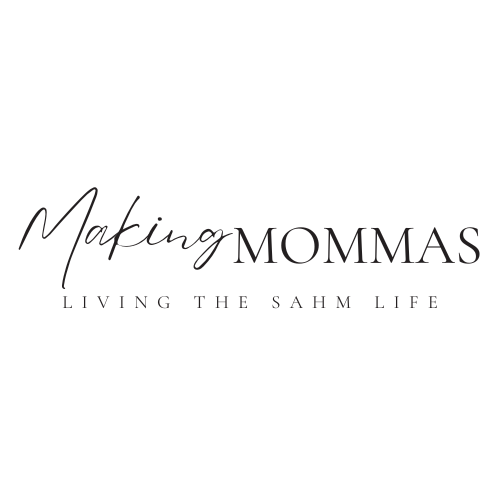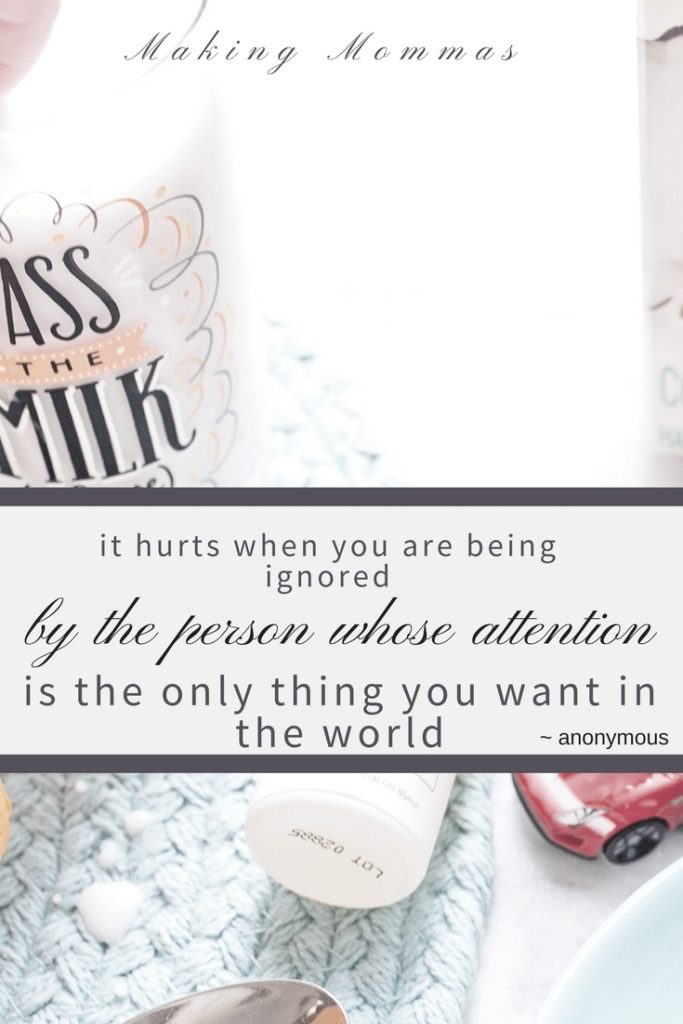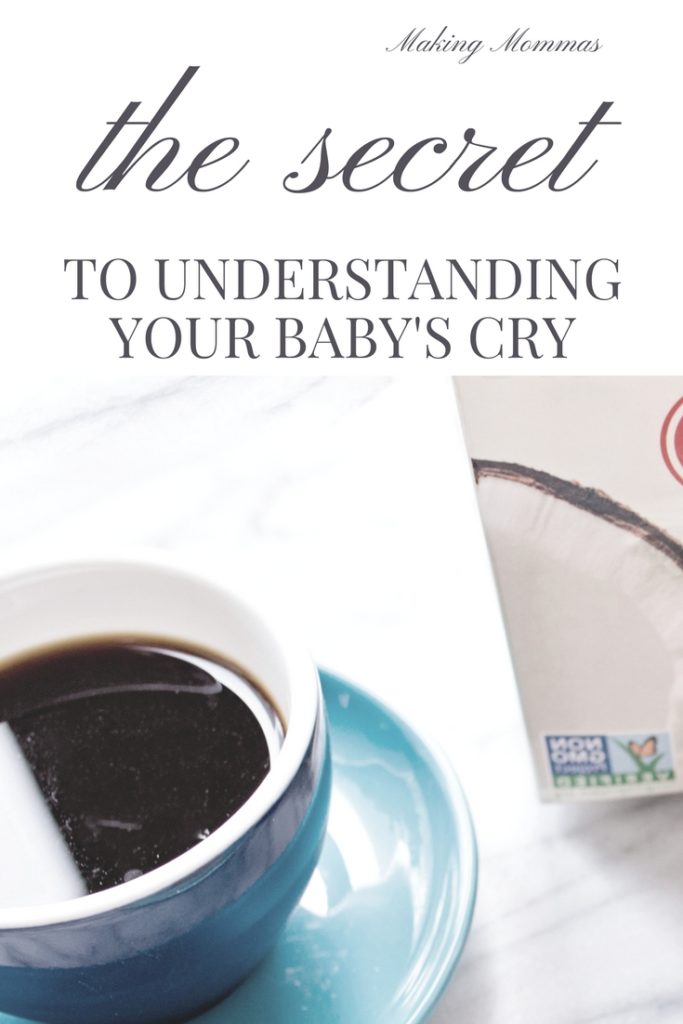Learn what your baby’s sounds actually mean!
They say every mom knows her baby’s cry.
And while I believe that is true, I think a lot of moms really do struggle with understanding their baby’s cry in those early months.
Sure, you can pick your baby out of a room full of crying babies. You know which one is yours – what your sweet little bundle of joy sounds like.
And after a few months, you know what she sounds like when she is upset, or hungry, or needs a diaper change. As she grows, you become all too familiar with her angry cry and her hurt cry. You know her when she is scared and when she is sad.
But it takes you a while to learn all of this. And in the meantime, you are constantly guessing at what your baby needs. You try first one thing, then another. Maybe she needs a diaper change. Perhaps she’s hungry. Maybe she just wants to cuddle.
What if I told you there was an easier way?
I wish I knew, three years ago, that there was an easier way to understand my baby’s cry.
We’d stand in our tiny living room, my husband and I, and we’d each have a baby in our arms. It would be late, late at night. Like, 3:00 a.m. late. We’d have some awful show on TV to keep us awake.
It was a nightly ritual for the first few months of the twins’ lives.
We’d sway and rock and bounce.
Then we’d pace the room a little, trying not to run into each other. We’d add a bounce step to our pacing. Giving up, we’d sit down for a mite, then stand up and try it all over again.
We’d move them around in our arms – sling them over our shoulders, pat their backs, cradle them, lay their tummies over our arm.
Anything, anything to get them to stop crying.
We’d burp, pat, and change diapers. Then we’d lay them down, only to pick them back up again. The crying was endless. We’d roll them over or lay them on our knees and caress their backs.
And when either of us got frustrated with the baby we had, we’d trade. And try it all, all over again.
Nothing worked.
I’m not sure how we survived those early months.
Not knowing what else it could be, we chalked it up to colic.
They cried a lot.
It could’ve been because they were just generally unhappy babies. They weren’t the only kids in the house, and didn’t always get their needs met immediately. It could have been because mom and dad were tired and irritable, and just perceived them as criers.
Whatever the reason, our patience was thin – for the twins, for each other, and for our other children.
That first year was horrid.
I’m not going to lie to you.
We didn’t have very many of those cute little “double the blessings” kind of moments. We had A LOT of double the crap kind of moments. And it was hard on everyone.
We, my husband and I, two wonderfully patient and loving people, were stressed to our max.
We had no idea how to cope.
Our days were spent trying to figure out how to care for these two odd little creatures.
We were just trying to survive. Quite literally.
And we didn’t see how it could get any better.
A couple of years later, though, it did.
And looking back, my husband laughs (nervously). “We are darn lucky there wasn’t a murder/suicide.”
Lucky indeed.
That first year could have gone so much more smoothly. It didn’t have to be so difficult.
We are good parents. We had four boys before the twins were born, and we had never experienced anything quite like this.
But there was one thing I know now that I wish I knew then: The Dunstan Baby Language.
I’m not kidding you.
I started working part-time at a pregnancy resource center when the twins were two. And a veteran mom – a mom of 19 years and six boys later – learned a few tricks.
And one was the Dunstan Baby Language.
It was too late for me to use this with the twins, but if you have an infant, it is not too late for you! Don’t make your life harder than it has to be.
Learn the secret to understanding your baby’s cry now! Today!
{This post has affiliate links, which means I earn a small commission if you decide to purchase an item using one of my links. It costs you nothing extra and helps to support Making Mommas. See my disclosure policy for more info.}
The Dunstan Baby Language was researched and developed by an Australian musician-turned-mom. Priscilla Dunstan had a photographic memory for sound and used it to decode the sounds babies make right before they really start crying.
I seriously could’ve used her strategy three years ago.
If you can decipher what your baby is trying to tell you, before she goes into an all-out cry mode, then you can meet her needs quickly. And if you can meet her needs rapidly, not only is she happy and content, but you are happy and content.
I spent so many months in such a reactive, stressed-out state. I felt helpless; powerless to take care of my babies. I never knew what they wanted or how to soothe them. And there were two of them, so the crying seemed endless.
I am a mom who likes to meet her baby’s needs immediately. It builds trust. It strengthens that bond. And it makes life so much easier for everyone.
If you think that sounds nice, and you too want to meet your baby’s needs immediately, then read on!
The secret to understanding your baby’s cry is in the basics of the Dunstan Baby Language
Neh
Neh means hungry.
Neh is the sound a baby makes when he does his cute little sucking reflex. If you can train yourself to hear this sound before he starts crying, you will always know when to feed him. Some other signs: licking his lips, sucking on his fists, rootin’ around (otherwise known as turning his head from side to side – he does this if he is a breastfed baby and he’s looking for a boob). If you see these movements and hear the Neh sound, catch him before he bursts into a desperate cry. And feed the little guy.
Eh
Eh means your baby needs to burp.
Your baby’s chest will tighten as she needs to release trapped bubbles of air, and the Eh is the cute little noise that escapes her lips as she tries to release those air bubbles. If you hear this sound, you can help her out by burping her. Thus, she does not need to cry out for assistance.
Eairh
Eairh means your baby is in pain.
She has gas. This is from bubbles that did not get released or from tummy gas. You need to help your baby pass that gas by either burping your baby, messaging her back, or moving and pumping her legs.
This Eairh sounds more urgent. It is a distress call. Your baby will appear rigid or pull her legs towards her tummy. Help her burp, fart or poop before her desperation turns in to an all-out cry and you will feel like a boss mom!
Owh
Owh is the sound your sleepy baby will make.
It is the yawn reflex – that cute little oh your baby will make with her mouth – that makes this sound. Some other cues to look for are jerky movements, an arching back, and your baby pulling at her ears or rubbing her eyes. If you see these signs accompanied by the owh sound, help your baby go to sleep.
Heh
Heh is the sound for general discomfort.
It is a breathy heh sound. This might mean that your baby is too warm, too cold, or has a dirty diaper. Something could be pinching him or poking him. It’s hard to say.
You will have to do some trial and error to figure out exactly what is causing the discomfort. Catch this sound before your baby starts crying and you can quickly intervene to keep the little babes comfy and cozy all day long.
If you can learn these sounds then you can help your baby before the crying escalates. This teaches the baby that she can trust you to care for her. It will build a stronger bond between mom and baby. And it will keep mom cool, collected and happy.
You will feel empowered to care for your little one, rather than helpless and hopeless.
And maybe, just maybe, knowing exactly what your sweet baby needs before she starts crying will help you to soothe her, comfort her, and get her back to sleep quickly, so that you do not have to spend your nights pacing the floor and watching a repeat of the weather channel!
Are you looking for more on the Dunstan Baby Language? Visit their site!
You can order the Dunstan Baby Language videos or stream them on your computer or phone. Reading is one thing; watching the videos and actually learning the sounds is quite another!
I don’t know about you, but I had to hear the sounds repeatedly before I was able to train my ear to hear them. These videos walk you through that.
Or check out a pregnancy resource center near you – they most likely have the videos. Other resources might be the library, early childhood education classes or community education classes. All of these organizations often have a free resource library – maybe you will get lucky and the Dunstan Baby Language Video collection will be there!
And then drop back here and let me know what you think!
More parenting tips you might like
10 Positive Parenting Techniques You Should Use to Discipline Your Children
The Desperate Mom’s Little Guide to Surviving Life with 2 Under 2
How to Be a Good Mom – 3 Simple Ways
How to Help Your Child Asleep When You Spend the Night Away From Home
Seven Steps to Bonding with Your Baby
References:


